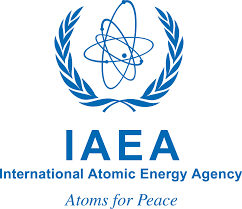National Current Affairs – UPSC/KAS Exams- 9th May 2019
Global Status Report on Road Safety
Topic: Important Reports in News
In News: Road accidents are the leading cause of death among people in the 5-29 age-group worldwide with more than 1.35 million lives lost each year and 50 million sustaining injuries, according to a World Health Organisation (WHO) report.
More on the Topic:
- Global Status Report on Road Safety is released by WHO
- Since 2008 India have maintained dubious distinction of being world number one in road crash deaths.
- In 2015, India became a signatory to the Brasilia Declaration on Road Safety, where India committed to halving road crash deaths by 2020.
- As per the data released by the Indian government, road crashes kill close to 1,50,000 people each year. However, the WHO global status report on road safety had challenged the numbers and stated that India might be losing over 2,99,000 people each year.
- Road crashes have emerged as the single biggest killer of people in the age group of 15-45.
- The reasons listed for this trend include rapid urbanisation, poor safety, lack of enforcement, distracted, influence of drugs or alcohol, speeding and a failure to wear seat-belts or helmets.
Source:The Hindu
Eliminating Industrially Produced Trans Fats
Topic: Health
In News: Trans fat, also called the worst form of fat in food, responsible for over 5,00,000 deaths globally from coronary heart disease each year, could be eliminated from the industrially produced global food supply by 2023 if the World Health Organization (WHO) has its way.
More on the Topic:
- The WHO has welcomed its partnership with the International Food and Beverage Alliance (IFBA) to achieve this target.
- Eliminating industrially produced trans fat is one of the simplest and most effective ways to save lives and create a healthier food supply.
- India has among the highest number of coronary heart disease cases in the world.
About Trans Fat:
- Trans-fatty acids (TFAs) or Trans fats are the most harmful type of fats which can have much more adverse effects on our body than any other dietary constituent.
- These fats are largely produced artificially but a small amount also occurs naturally. Thus in our diet, these may be present as Artificial TFAs and/ or Natural TFAs.
- Artificial TFAs are formed when hydrogen is made to react with the oil to produce fats resembling pure ghee/butter.
- In our diet the major sources of artificial TFAs are the partially hydrogenated vegetable oils (PHVO)/vanaspati/ margarine while the natural TFAs are present in meats and dairy products, though in small amounts.
- TFAs pose a higher risk of heart disease than saturated fats. While saturated fats raise total cholesterol levels, TFAs not only raise total cholesterol levels but also reduce the good cholesterol (HDL), which helps to protect us against heart disease. Trans-fats consumption increases the risk of developing heart disease and stroke.
- It is also associated with a higher risk of developing obesity, type 2 diabetes, heart disease, metabolic syndrome, insulin resistance, infertility, certain types of cancers and can also lead to compromised fetal development causing harm to the yet to be born baby.
Model Mains Question: What do you understand by trans-fat? Analyse the measures taken by food regulator in India to regulate trans-fat content in processed foods.
Source: The Hindu
Border Roads Organisation (BRO)
Topic: Infrastructure Development
In News: Border Roads Organisation (BRO) is celebrated its 59th Raising Day recently.
More on the topic:
- BRO is a leading road construction agency under the Ministry of Defence with a primary role of providing road connectivity in border areas.
- It executes road construction and maintenance works along the Northern and Western frontiers primarily to meet the strategic requirements of the Army and is responsible for over 53,000 Km roads.
- The BRO has also constructed roads in friendly foreign countries like Bhutan, Myanmar, Afghanistan etc. thus contributing towards our strategic objectives in the region.
- It is staffed by officers and troops drawn from the Indian Army’s Corps of Engineers, Electrical and Mechanical Engineers, Army Service Corps, Military Police and army personnel on extra regimental employment.
- Engineering Service and personnel from the General Reserve Engineer Force (GREF) form the parent cadre of the Border Roads Organisation.
- The Border Roads Organization has played a very important role in both maintenance of security and in the development of border areas.
- Most of the development in the North Eastern states of India can be attributed to the relentless work done by the BRO. Socio economic development in the most inaccessible nooks and corners of our country are a result of the infrastructural work undertaken by the BRO.
- The BRO works in close association with the Indian Army in cases of natural disasters.
Source: The Hindu
Vigyan Samagam
Topic: Science and Technology
In News: Bringing the world’s major Mega Science projects together, India’s first-ever, global mega – Science Exhibition, ‘Vigyan Samagam’, was inaugurated at Nehru Science Centre, Mumbai.
More on the Topic:
- This multi-venue Science Exhibition, is planned in the four cities of Mumbai, Bengaluru, Kolkata and New Delhi.
- The exhibition will be of 11-month duration, commencing its journey from Mumbai. The Department of Atomic Energy (DAE) and Department of Science and Technology (DST) are funding the Exhibition while the National Council of Science Museums (NCSM) and Ministry of Culture are the venue partners.
- Vigyan Samagam exhibition showcase that DAE’s work on nuclear technologies and a work on fundamental science and research. It will also showcase the workings of the Universe.
- From discovery of the Higgs particle to that of gravitational waves from merger of neutron stars and black holes, these projects throw light on crucial questions related to the origin of the Universe and its evolution through its various stages.
- The Exhibition will highlight India’s contribution to the world’s science and technology innovations, researches in the areas of space science, nuclear technology.
- In each of the four cities, various engaging activities for school children and students will be taken up. Activities such as quizzes, essay-writing / drawing contests, and popular outdoor programmes like science awareness cyclothon etc. are planned.
- It will soon launch a mobile application Vigyan Samagam. The events such as talk shows, lectures etc. will be streamed live through social media platforms like Facebook, Twitter and YouTube.
Source:PIB
INS VELA
Topic: Science and Technology
In News: VELA the fourth Scorpene class submarine has been inducted into Indian Navy.
More on the Topic:
- It is a diesel-electric attack submarine of Kalvari-class.( The Kalvari class is a class of diesel-electric attack submarines based on the Scorpène-class)
- The Scorpene class of submarines can undertake multifarious tasks typically undertaken by any modern submarine which include anti-surface as well as anti-submarine warfare.
- INS Vela was first commissioned in 1973 in the Indian Naval Service and continued to serve for 37 years.
- It was the country’s oldest submarine when it was decommissioned on June 25, 2010.
Source:The Hindu
Ross Ice Shelf
Topic: Environment and Ecology
In News: Recently it is found that the Ross ice cap is melting rapidly leading to global sea-level rise of around 13.8 millimetres over the last 40 years.
More on the Topic:
- Antarctica’s Ross Ice Shelf is the world’s largest ice shelf roughly the size of France. The ice shelf is melting 10 times faster than the overall average, due to solar heating of the surrounding ocean surface.
- Antarctica comprises 90 per cent of the world’s ice, thus whatever happens to its ice and snow is a matter of serious concern, and if this situation continues, sea-levels would rise up to 60 meters by 2050 and the ocean would engulf coastal cities across the globe.
About Albedo Effect on Climate change:
- Much of the Earth’s reflectivity comes from natural sources. Dark-colored surfaces, such as forests and oceans absorb solar radiation, contributing to the warming of Earth. Alternatively, light-colored surfaces, such as ice sheets and deserts reflect the Sun’s radiation, cooling the planet.
- As the planet warms, rising temperatures cause Earth’s ice sheets to melt more rapidly. As the ice melts, there is less area of light-colored surface to reflect solar radiation and more dark-colored surface area of the ocean to absorb the heat.
- This further accelerates the rate of warming in a process called positive, or amplifying, feedback.
- Earth’s two largest ice sheets, Antarctica and Greenland, are particularly large contributors to the albedo effect.
Source: The Hindu




















